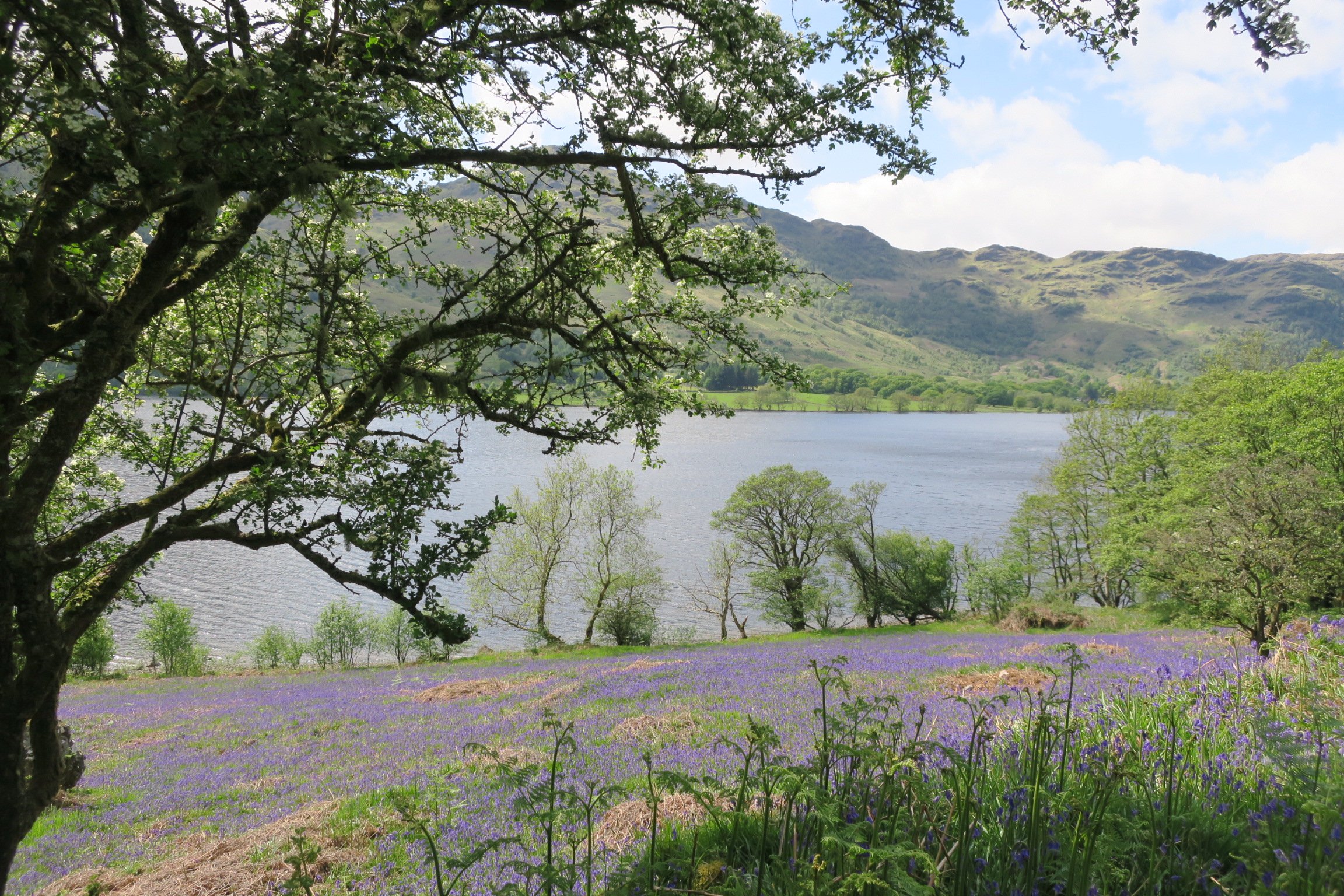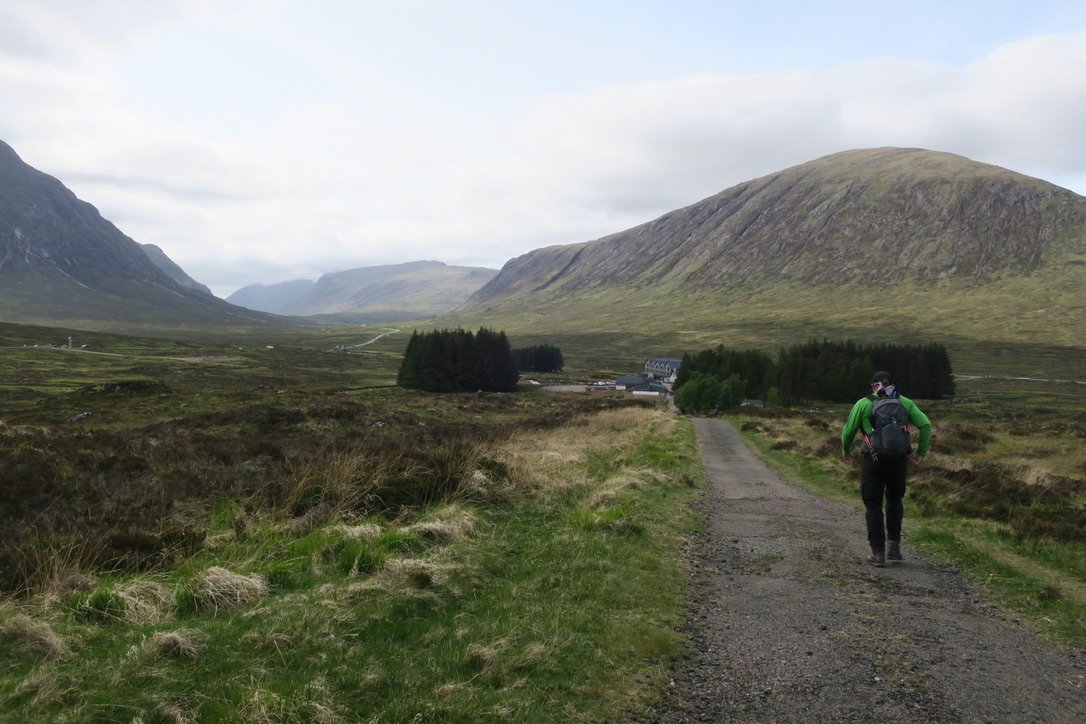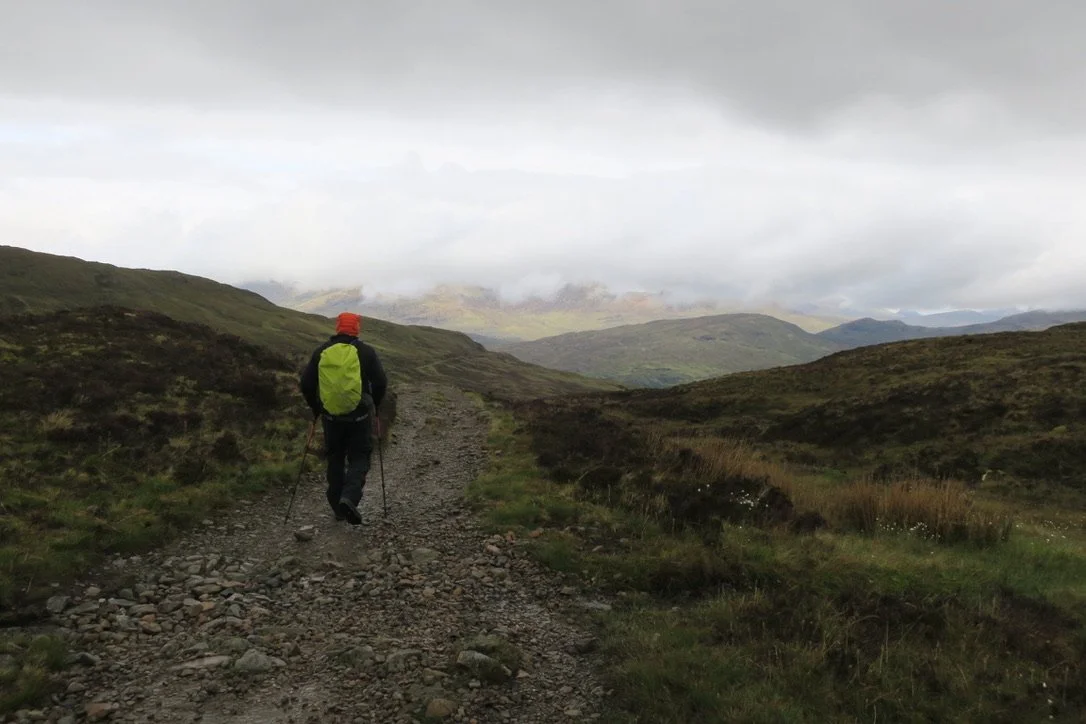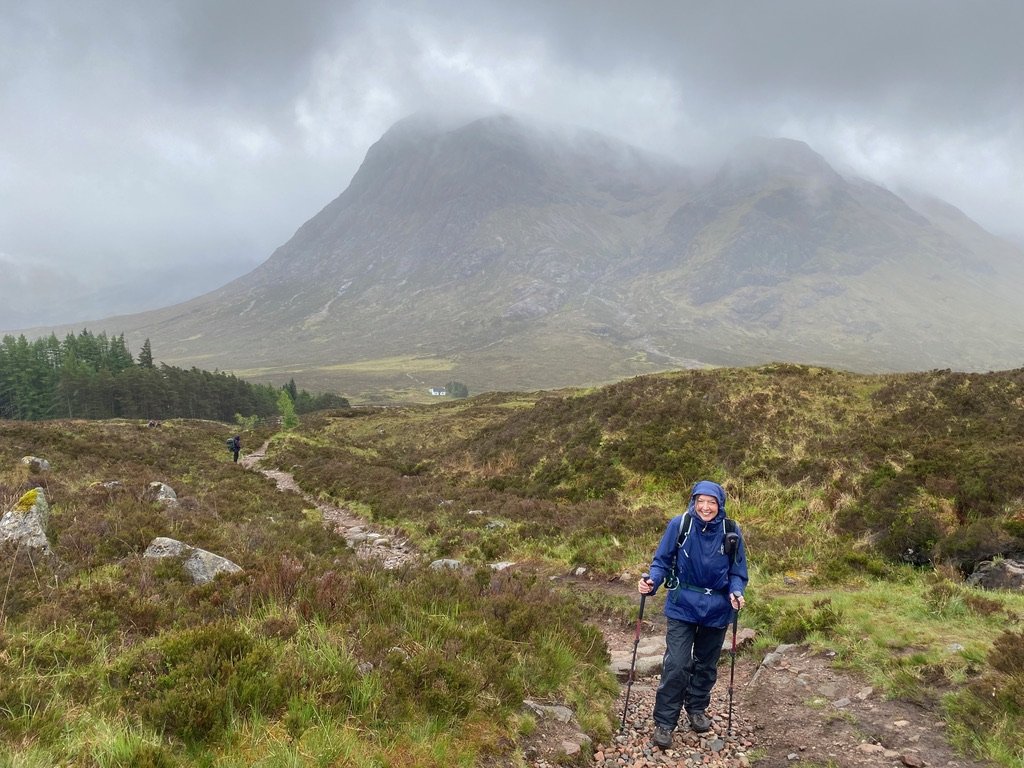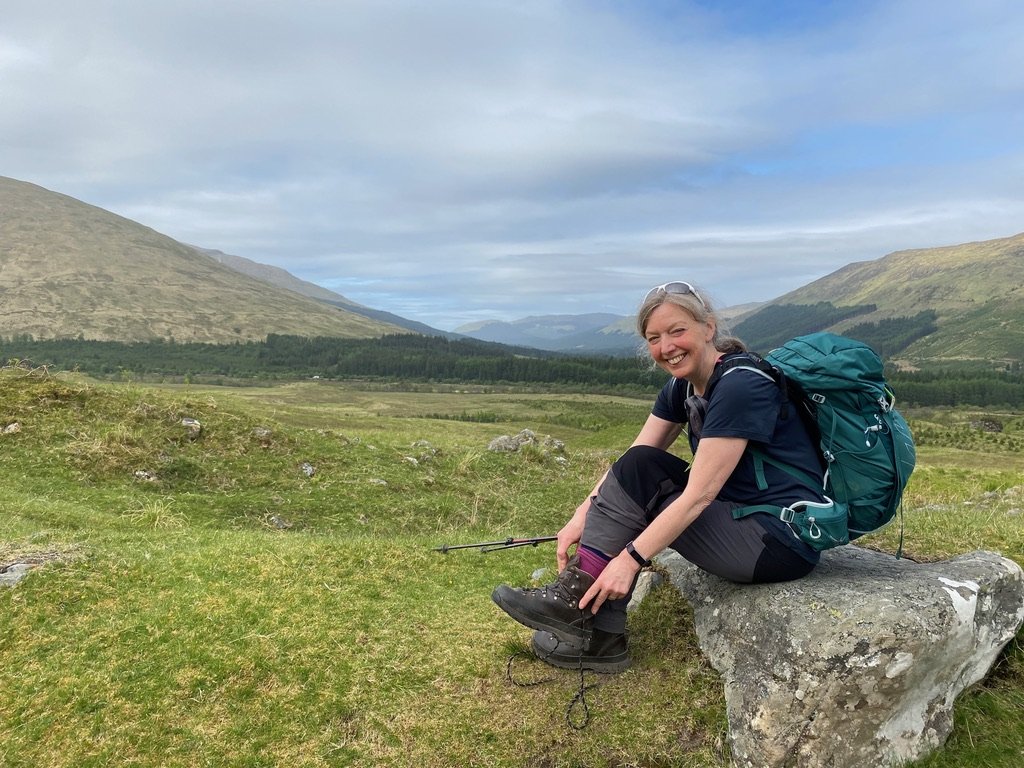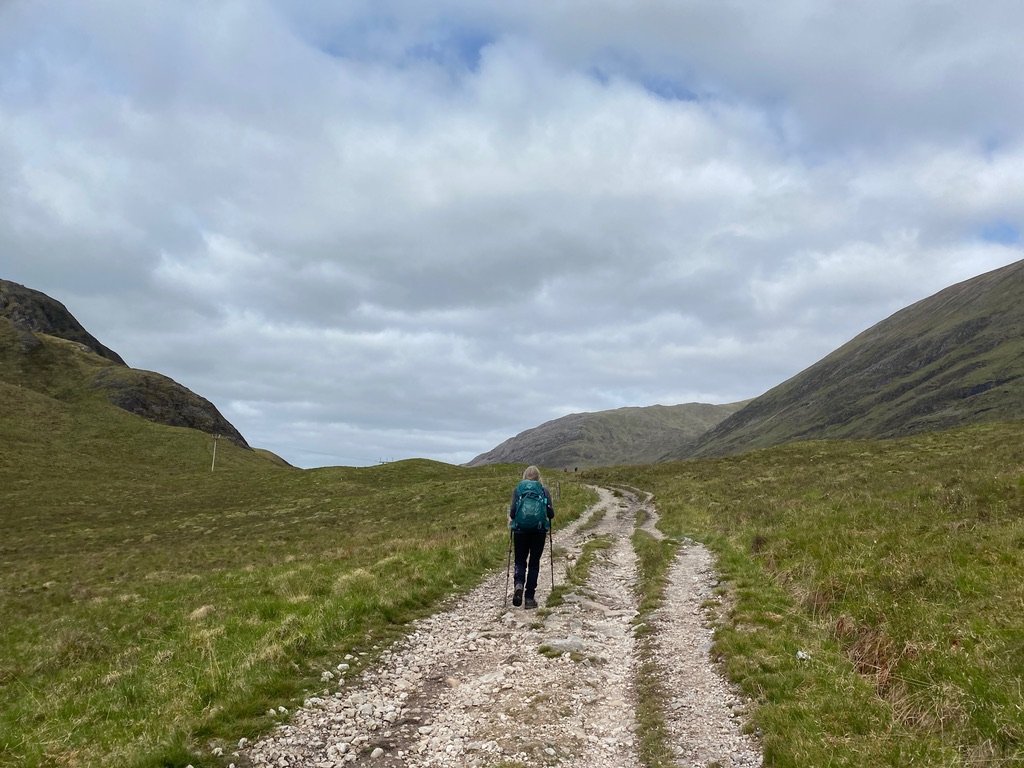Frequently asked questions about the West Highland Way
The answers below are from my own experience of walking the West Highland Way, sharing information which I think will help others planning the walk.
Visit the West Highland Way website for more official answers.
How long is the West Highland Way?
The West Highland Way is a long distance route covering 96 miles (154km). It’s usually walked from south to north, starting at Milngavie, just outside Glasgow, to Fort William in the Highlands.
It can also be walked in the opposite way and we came across runners in an ultra race who’d started in Fort William that morning. They were expecting to complete the full distance in under 48 hours!
Bear in mind that if you have accommodation booked which is slightly off-route, you’ll add a few extra miles to your journey. We walked around 105 miles in total.
How long does it take to walk the West Highland Way?
We did the walk in seven days, averaging between 10-20 miles per day. Take a look at my blog post Walking the West Highland Way: 7 day itinerary to see how that breaks down on each day.
Choosing how long to take was one of the things which baffled us in the beginning. There are so many variables from the terrain, elevation, and fitness levels. Our research brought up itineraries from 5-10 days.
In the end, we decided to hand everything over to a booking company and, after much research, chose Macs Adventure. They have several different West Highland Way itineraries, so we just picked their most popular.
Where to stay on the West Highland Way?
Working out our overnight accommodation was another reason we decided to get Macs Adventure to take care of everything. The West Highland Way is popular and not being able to find a place to stay can throw all your plans out.
But we did meet plenty of other walkers who’d sorted out their own accommodation. Depending on how much luxury you want, there are campsites, hostels, B&B’s, and hotels to choose from.
Some locations were remote with little in the way of choice, especially along the shores of Loch Lomond. We came across more than I expected, but it will adjust the mileage walked every day if you have to stop earlier, or carry on to the next place.
Glencoe is another area with limited choice. The walk passes straight past the Kingshouse Hotel, which also has a bunkhouse and camping. It naturally gets booked up quickly but Glencoe village has more choice - it just means a taxi ride there and back from the West Highland Way path.
Can I camp on the West Highland Way?
Yes, absolutely, we came across plenty of people camping.
We originally wanted to camp, using both campsites and wild camping. But we became confused about camping options along the shores of Loch Lomond. The Scottish Access Code allows wild camping, but the Loch Lomond and Trossachs National Park have camping byelaws between March and September.
Much of the Loch Lomond shoreline is under a camping management zone. But there are campsites at Sallochy, Rowardennan Youth Hostel, and Beinglas Farm. In other areas, people were wild camping.
Having now walked the West Highland Way and seen where the campsites are located, I’d feel much more comfortable backpacking and camping. That may even be a future challenge 🤔 although there are lots of other long distance paths I’d like to walk too.
How far in advance do I need to book the West Highland Way?
Everything we saw online said as far in advance as possible! Because it’s such a popular walk, places get snapped up quickly.
We had everything booked and confirmed six months before the walk. Even so, we still had to change our starting date to stay at the Kingshouse in Glencoe.
I suspect the campsites also get booked up, so it’s well worth planning ahead.
Do I need to read a map to walk the West Highland Way?
There are waymarker posts all along the length of the West Highland Way and most of the time we just followed them. But we did check the map occasionally when it was a bit vague, or if we just wanted to see where we were.
Even though there were waymarker posts, I’d always recommend carrying a map and compass - and knowing how to use them. It’s better to have them and not need them, than need them and not have them.
What’s the most difficult part of the West Highland Way?
While planning our West Highland Way adventure, we wanted to know which would be the most challenging parts. Partly so we could work out whether we were fit enough to walk the distance, and partly so we could see whether those sections needed to be shorter days.
Everything we’d read said that our third day, Rowardennan to Inverarnan, along the shore of Loch Lomond would be the toughest. So I was waiting with some trepidation for that section.
It is rough, and undulating, with tree roots and big steps over rocks. But it wasn’t as bad as expected, and it was an incredibly beautiful place to be. Maybe I’d found my long-distance walking legs. Or perhaps I’m used to that kind of terrain in the Peak District. But, whilst it was hard work, rocky and rooty, it was also one of my favourite days on the trail.
I had two other big challenges in my head before starting the walk. One was the long 19 mile section from Tyndrum to Glencoe. The other was climbing the horrific sounding Devil’s Staircase out of Glencoe.
The long section could be split into two 10-mile days by staying at the remote Inveroran Hotel. And the Devil’s Staircase was a steady climb out of the valley - named so by the soldiers who detested carrying stones and equipment up and down the path.
The West Highland Way is graded as a moderate to difficult trail. It begins with relatively easy, flat sections, and becomes more difficult as you travel north. It’s not a technically difficult trail but there are some steep climbs and descents. And the daily distance can be a challenge. We began preparing for it six months in advance, walking most weekends and increasing the distance as the day drew nearer.
What’s the best time of year to walk the West Highland Way?
I’ve always loved Scotland in May, so that’s when we went. But it is a popular month which makes it more difficult to secure accommodation.
The West Highland Way gets walked throughout the year, although spring and autumn are popular months (maybe because of the infamous midgees).
Winter conditions can be found between November to March. So, if you plan to tackle it during those months, it’s important to be fit, well prepared, and have good navigation skills.
Do I need to worry about ticks and midges on the West Highland Way?
Yep, you need to be aware of both during your walk, especially during the summer months.
If you’ve not heard of ticks, or want to know more, read my blog post What to do if you get a tick bite. I promise there are no pictures of the nasty little blighters. But it will tell you what they are, what to look out for, why they’re a problem (Lyme Disease), and what to do if you get a bite. And if you want to see pics, there are links to do that too!
The tiny Scottish midge has a huge reputation. And for good reason at certain times of the year. Midge season is between May and September, but the exact dates will depend on weather conditions.
If you react to their bites, like me, they can be a menace. One of the best ways to avoid them is to hope for windy conditions! To be serious for a moment, the following things can help: wearing a midge head net, covering exposed skin, using midge repellant (the best I’ve found is Smidge and it’s Deet free).
Smidge have a midge forecast on their website, which can be fun to look at. But you’ll have planned your walk so far in advance that there’s not much you can do about it by then, other than use prevention measures!
Do I need walking boots and poles on the West Highland Way?
Both of us wore good quality walking boots and used walking poles. Part of the reason was because an expert in long distance walking said that my feet would thank me for the extra support as I built up the miles. He was right, they did!
The walking poles also helped. Trial and error has shown me that I can walk longer distances over greater time periods when I use walking poles.
The paths on the West Highland Way are generally hard packed and good. I’m glad I left my gaiters at home because they wouldn’t have come out of the bag.
But your decision on footwear will depend on what you’re used to. Plenty of people wore running shoes or lightweight boots. I was envious in the first day or two. But by the end of the walk, I was glad of my choice.
How do I get to the start, and back from the finish of the West Highland Way?
I’m going to assume you’re walking from Milngavie to Fort William for this answer. If not, reverse my advice!
We drove to Milngavie and stayed in the Premier Inn before starting the walk. The hotel allowed us to park for the week, making a donation to their charity when we picked the car up at the end. We were also told that the train station in Milngavie allowed free parking for the week too.
If you’re using public transport, you can catch a bus or train to Milngavie. The train station is close to the trail start so really easy to do it that way.
To get back from Fort William, we caught a train back to Milngavie. The journey took around 4 hours and went along much of the West Highland Way route, so it was superb scenery. And great fun waving hello at the walkers, wishing we were on the trail with them.
How do I prevent blisters when walking the West Highland Way?
We fully expected to get blisters and were amazed not to! I’m no expert and fingers crossed can stay blister free in the future. But we did a few things during our walk that I’m convinced helped:
Thinking beforehand about the distance we could walk each day. Having met a few people walking it over five days, I reckon the longer distances / time on our feet would have made it harder to prevent blisters towards the end.
Making sure our boots fit properly and were broken in. It’s worth going to a good quality outdoor shop with staff who know how to fit boots.
Thinking about how our boots were laced. I changed the lacing on one half way through the walk to take the pressure off a point which had begun hurting.
Wearing good quality wicking socks. I used Bridgedale and wore a liner sock too. I only recently started wearing liner socks again but suspect they helped.
Airing our feet. I’m convinced this was the biggest factor in preventing blisters, especially as the weather was hot. At least once a day, we’d stop, take off our boots and socks, and give our feet the chance to cool down and dry.
Carrying a clean, dry pair of socks. I think this was a massive help too. After airing our feet, we’d put on a clean pair of socks and it was like walking on air! On the longest and hottest days, I changed them twice.
Stopping and emptying our boots / socks if we felt any grit or dirt.
Stopping as soon as we felt a hot spot begin to rub. By airing our feet and maybe changing our socks, the hot spot would disappear.
Compressing and elevating our feet at the end of the day.
We packed and carried blister protection so if we had any problems, they could have been sorted out there and then. One of our fellow walkers also recommended putting vaseline on parts of the feet - they’d picked that trick up when walking the month long Camino de Santiago.
Blisters can scupper your enjoyment or even stop your walk altogether, so it’s really worth doing things to look after your feet.
What do I need to pack for the West Highland Way?
The answer to this question depends on lots of factors, not least whether you’re camping or staying in hotels. But, to give you a starting point, I’ll share packing details for our seven day walk with overnight baggage transfer.
We both had 30L rucksacks and an overnight bag. Our rucksacks contained things we wanted with us for the day. The exact contents were determined by the weather but would include items such as:
Lunch and snacks
Water
Sit mat
Spare socks and liners
Midge net and smidge
Spare layer/s
Waterproofs
Sun protection - including hat and sunglasses
Warm hat and buff
Map and compass
Camera
Rechargeable battery pack and phone charger
Tick remover
Our overnight bags were carried to the next accommodation for the night by AMS Scotland, booked through Macs Adventure.
Click the button below to grab a copy of our packing list 👇
If there’s something not covered in this post that you’d love to know, either post a comment below or get in touch to ask.
Read my blog post about Walking the West Highland Way: 7 day itinerary
Get new adventures sent directly to your inbox. Emails usually go out every other week.
SIGN UP TO MY NEWSLETTER
Before you go…
I’ve always wanted to keep this website ad-free but web hosting and developing new content costs money, meaning I’m paying out instead of earning from the site. So, if you’ve enjoyed this post, been inspired, grabbed a route GPX download, or found something helpful, maybe you’d like to buy me a cuppa via Ko-fi. You don’t have to, but thank you if you can 🙏
Outdoor-Girl is run by Jacquie Budd, an outdoor adventure and marketing content writer for brands that care about their impact on people and the planet.
